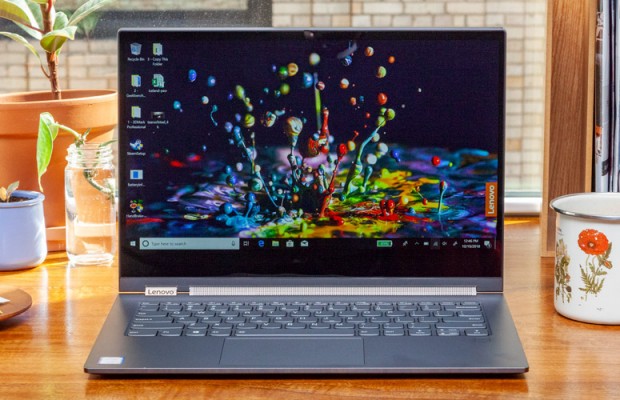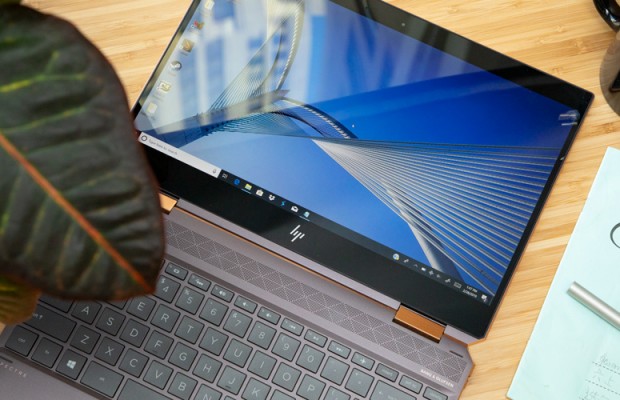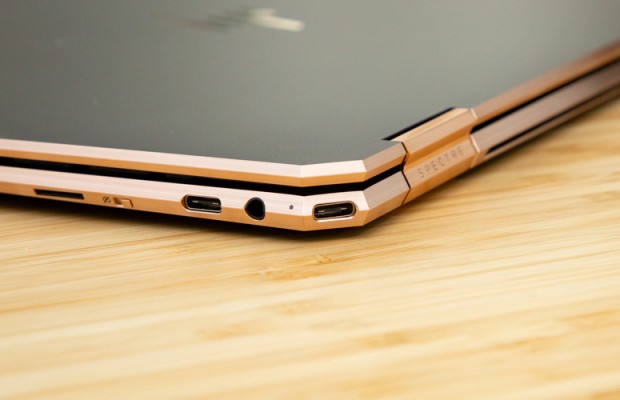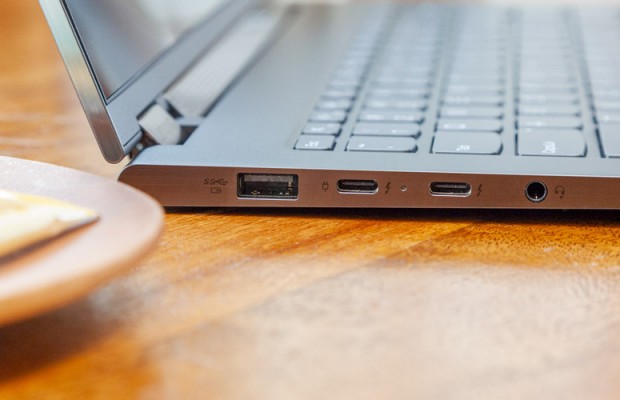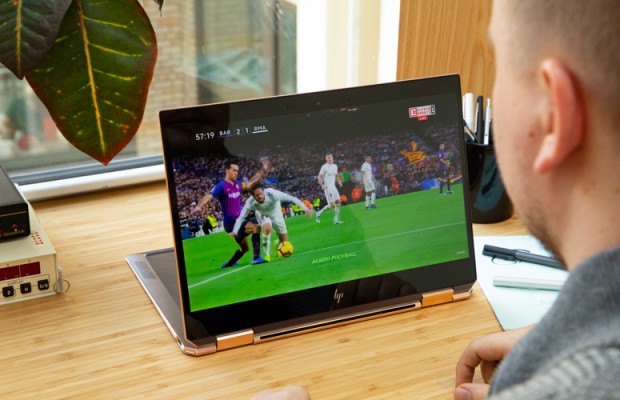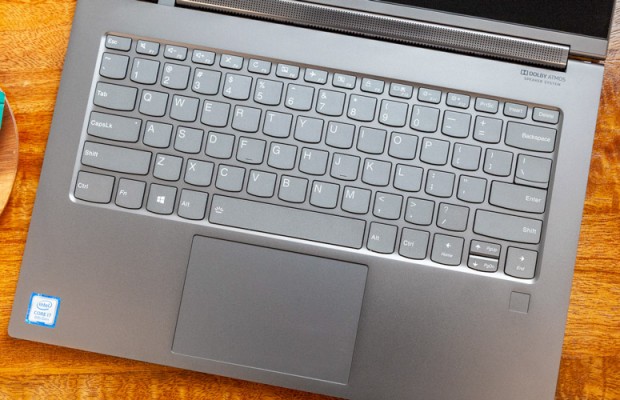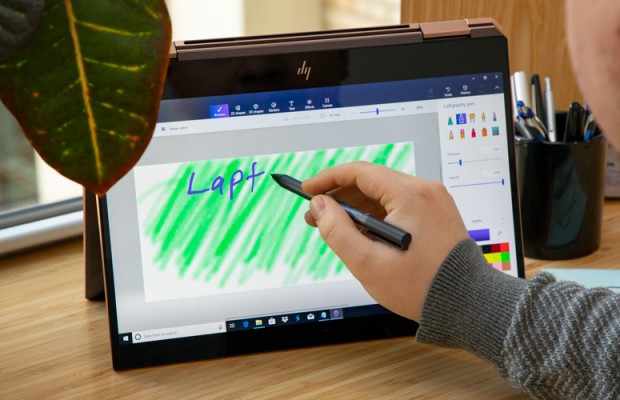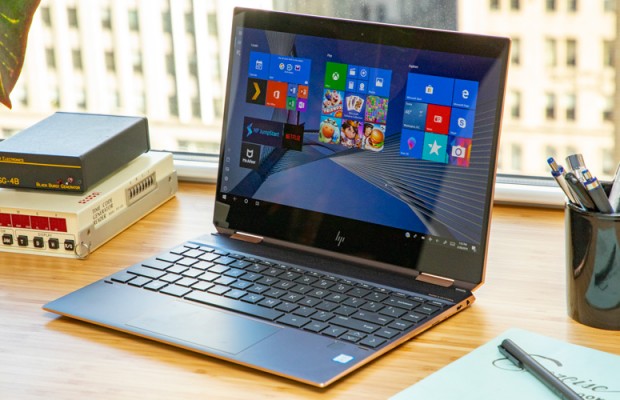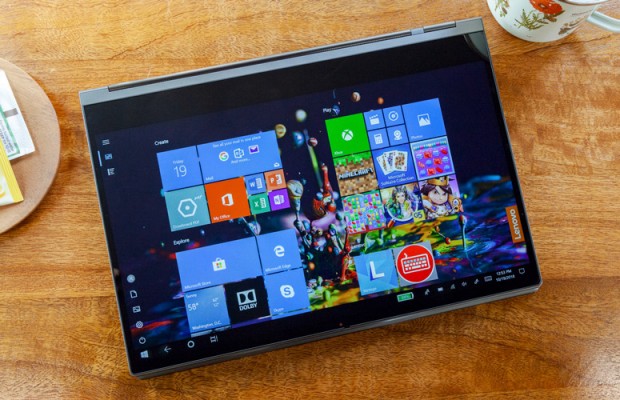HP Spectre x360 vs Lenovo Yoga C930: Which 2-in-1 Wins?
If you want the best 2-in-1 laptop, then the HP Spectre x360 and Lenovo Yoga C930 should be at the top of your list. HP's new Spectre x360 is one of the most attractive laptops on the market and it lasts more than 12 hours of a charge. The laptop also has an extremely vivid display and its Core i7-8565 CPU offers strong performance.
The Yoga C930 quickly rose to the top of our best 2-in-1 rankings when it launched last year. We love its utilitarian design, which sports a soundbar hinge, a stylus slot, and a sliding webcam cover. The lightweight Yoga C930 also lasts a full day on a charge and its Core i7 CPU can run even the most demanding programs.
So, which of these excellent 2-in-1 laptops is right for you? Let's take a closer look.
HP Spectre x360 (2019) vs. Lenovo Yoga C930: Specs Comparison
| Row 0 - Cell 0 | HP Spectre x360 (2019) | Lenovo Yoga C930 |
| Starting Price | $1,149.99 | $1,070 |
| Colors | Dark Ash Silver; Poseidon Blue | Iron Gray; Mica |
| Display | 13.3-inch, 1080p or 4K | 13.9-inch, 4K or 1080p |
| CPU | Intel Core i7-8565U | Intel Core i7-8550U |
| RAM | 8GB | 12GB |
| SSD | 256GB | 256GB |
| Key Travel | 1.4mm | 1.3mm |
| Ports | USB 3.1, 2 Thunderbolt 3, microSD card, headphone | USB 3.1, 2 Thunderbolt 3, headphone |
| Webcam | 1080p | 720p |
| Size | 12.2 x 8.6 x 0.6 inches | 12.6 x 8.9 x 0.6 inches |
| Weight | 2.8 pounds | 3.1 pounds |
| Geekbench 4 | 14,935 | 13,952 |
| Battery Life (hrs:mins) | 12:07 | 10:10 |
Design
The Spectre x360 and Yoga C930 are two of the sleekest laptops on the market. But if I had to choose one based on design alone, I'd go with the Spectre x360.
With golden chamfered corners and faceted edges, the elegant Spectre x360 looks more like jewelry than tech. More chrome gold trim frames the deck as well as the touchpad, making this luxurious laptop appear even more expensive. Also on the Spectre x360's aluminum chassis is a discrete fingerprint sensor and a stylish speaker grille shaped in a triangular pattern, while HP's modern logo, embossed in gold, is centered on the lid.
Sign up to receive The Snapshot, a free special dispatch from Laptop Mag, in your inbox.
New to the Spectre is a physical switch that cuts power to the webcam, so you don't have to worry about snooping eyes when you're not teleconferencing. Not conforming to the boring silver chassis we see from its competitors, HP offers the Spectre x360 in two distinctive color variants: Dark Ash Silver and Poseidon Blue.
Lenovo took a utilitarian approach with the Yoga C930, adding functionality at the expense of aesthetics. Lenovo replaced the previous model's watchband-style hinge with a more practical soundbar. On the rear of the Yoga C930 is a pen slot for the included stylus, and there is a slider to cover the webcam when it's not in use.
While it won't stand out like the Spectre x360, the Yoga C930 is still attractive in its own right. The laptop has a stylish minimalist design, with its gunmetal gray lid and chrome accents. And unlike the Spectre x360, the display on this razor-thin aluminum slate is bordered by very thin bezels.
We had no problems converting both of these 2-in-1s into tablets by flipping their displays back 360 degrees. They can also be positioned into tent mode for displaying content or presentations.
MORE: Best and Worst Laptop Brands
You can easily split these notebooks into your backpack and take them on trips. However, the Spectre x360 is the more portable device, although that's to be expected given its smaller display. At 12.2 x 8.6 x 0.6 inches and 2.8 pounds, the 13.3-inch Spectre x360 is smaller and lighter than the 13.9-inch Yoga C930 (12.6 x 8.9 x 0.6 inches, 3.1 pounds).
Winner: Spectre x360
Ports
The port selection on these laptops is nearly identical, but a microSD card slot gives the Spectre x360 an edge.
A Thunderbolt 3 port, a headphone jack, and a microSD card slot take up the right side of the Spectre x360, while a lone USB 3.1 Type-A port is housed on the left. There is also a second Thunderbolt 3 input cleverly located on the laptop's chamfered right corner.
You'll find all of the Yoga C930's ports on the left side of its chassis. Those include a USB 3.1 Type-A port, two Thunderbolt 3 inputs, and a headphone jack.
Winner: Spectre x360
Display
The Yoga C930 has a larger display than the Spectre x360, but the panel on the HP laptop is brighter and more colorful.
Both laptops have 1080p displays, so they should be equally sharp, although the Spectre x360 has a slightly higher pixel density.
The HP Spectre x360's 13.3-inch, 1080p panel covers 150 percent of the sRGB color gamut, which is significantly higher than the Yoga C930's 100 percent. The premium laptop category average is between those results, at 118 percent.
MORE: Laptops with the Best Display Brightness
Neither display impresses when it comes to brightness, but the Spectre x360's panel is a bit more luminous, reaching a peak of 287 nits compared to the Yoga C930's 273 nits. Both of those results are below the 329-nit category average.
Winner: Spectre x360
Keyboard and Touchpad
I'd have no complaints using either of these laptop's keyboards, but the Spectre x360's is more comfortable to type on.
Despite its slim size, the Spectre x360's keys have 1.4 millimeters of travel, which is close to our 1.5mm preference. And with 70 grams of actuation force, the chiclet-style keys are punchy and provide a nice, weighty tactile click. The keys are large and well-spaced and there are multiple brightness levels for backlighting.
The keys on the Yoga C930 are a bit more shallow, at 1.3mm, and a high 75 grams of actuation force make them feel somewhat stiff. On a positive note, the slightly curved keys are large and smartly arranged. Overall, the Yoga C930's keyboard isn't as comfortable as the Spectre x360's, but it's a step above the average ultrabook.
The Spectre x360's 4.7 x 2.3-inch touchpad is longer but more narrow than the Yoga C930's 4.1 x 2.7-inch touchpad. I had no problems using either surface to execute Windows 10 gestures, like pinch-to-zoom and three-finger swipe to switch between windows.
Winner: Spectre x360
Performance
Both of these laptops offer excellent performance, but the Spectre x360 has the slight advantage thanks to its newer Intel Core i7-8565U CPU.
Our Spectre x360 review unit --- equipped with an Intel Core i7-8656U CPU and 8GB of RAM --- scored a 14,935 on the Geekbench 4.3 overall performance test, narrowly topping the Yoga C930 (Intel Core i7-8550U with 12GB of RAM) and the category average (13,293).
MORE: Laptops with the Best Productivity Performance
The 256GB PCI NVMe M.2 SSD inside the Spectre x360 duplicated 4.97GB of mixed-media files in 13 seconds for a rate of 391.5 megabytes per second on our File Transfer test. Again, the HP laptop narrowly outpaced the Yoga C930 and its 256GB PCIe NVMe SSD, which completed the task at a rate of 339.3 MBps. Blazing fast hard drives like those on the MacBook Pro have raised the category average to 548.4 MBps.
In our Handbrake video transcoding test, the Spectre x360 took 22 minutes and 30 seconds to convert a 4K video into 1080p resolution. This time, the Yoga C930 came out in front with a shorter time of 20 minutes and 34 seconds.
With their integrated Intel UHD 620 GPUs, neither of these laptops are gaming powerhouses. The Spectre x360 scored a 90,977 on the 3DMark Ice Storm Unlimited benchmark test, which is a bit higher than what the Yoga C930 (85,758) netted. In our real-world test, the Spectre x360 played the racing game Dirt 3 at 56 frames per second whereas the Yoga C930 topped out at 37 fps.
Winner: Spectre x360
Battery Life
Both of these 2-in-1s easily last a full day on a charge, but the Spectre x360, once again, edges out the Yoga C930.
The Spectre x360 lasted an outstanding 12 hours and 7 minutes on our Laptop Mag battery test, which involves continuous web surfing over Wi-Fi at 150 nits of screen brightness. The Yoga C930 also put up an excellent result, at 10 hours and 10 minutes, but it just can't keep up with the Spectre x360.
Both of these laptops are available with optional 4K displays. While we haven't tested them, you should expect shorter runtimes from those models.
Winner: Spectre x360
Value and Price
With a starting price of $1,359, the Spectre x360 costs a bit more than its competitors. The good news is that the 1080p base model has some strong components, including an Intel Core i7-8565U CPU, 8GB of RAM and a 256GB SSD. For about $100 more, you can opt for a SureView display and double RAM and storage capacities to 16GB and 512GB, respectively. For $1,549, the top-of-the-line Spectre x360 has the same specs but a 4K display.
Unlike the Spectre x360, the Yoga C930 is available with a Core i5-8250 CPU. That $1,069 base model also comes with 8GB of RAM and a 256GB SSD. A Yoga C930 with comparable specs to the base Spectre x360 --- a Core i7-8550U CPU, 8GB of RAM and a 256GB SSD --- costs about $150 less, at $1,210. On the high end, a 4K Yoga C930 with a Core i7 CPU, 16GB of RAM and a 1TB SSD costs $1,510. You can customize any of the FHD Yoga C930 models with a 4K display for an extra $200.
Winner: Yoga C930
Overall Winner: Spectre x360
| Row 0 - Cell 0 | HP Spectre x360 | Lenovo Yoga C930 |
| Design (10) | 9 | 8 |
| Ports (10) | 8 | 7 |
| Display (15) | 14 | 12 |
| Keyboard/Touchpad (15) | 14 | 12 |
| Performance (20) | 18 | 17 |
| Battery Life (20) | 19 | 17 |
| Value (10) | 6 | 8 |
| Overall (100) | 88 | 81 |
This seemed like a dead-even matchup going in, but the Spectre x360 won six of the seven rounds. A closer look reveals that while both laptops excel in each of those categories, the Spectre x360 just edges out the Yoga C930. The Spectre x360 has longer battery life, a more vivid display, and a better keyboard. Also, the Spectre x360's newer Core i7-8565U CPU offers a slight bump in performance to what the Yoga C930 offers.
In conclusion, the Spectre x360 is a better overall laptop than the Yoga C930. However, if you want to save some money or need a place to store your stylus, the C930 is still an excellent option.
Credit: Laptop Mag
Phillip Tracy is the assistant managing editor at Laptop Mag where he reviews laptops, phones and other gadgets while covering the latest industry news. After graduating with a journalism degree from the University of Texas at Austin, Phillip became a tech reporter at the Daily Dot. There, he wrote reviews for a range of gadgets and covered everything from social media trends to cybersecurity. Prior to that, he wrote for RCR Wireless News covering 5G and IoT. When he's not tinkering with devices, you can find Phillip playing video games, reading, traveling or watching soccer.


